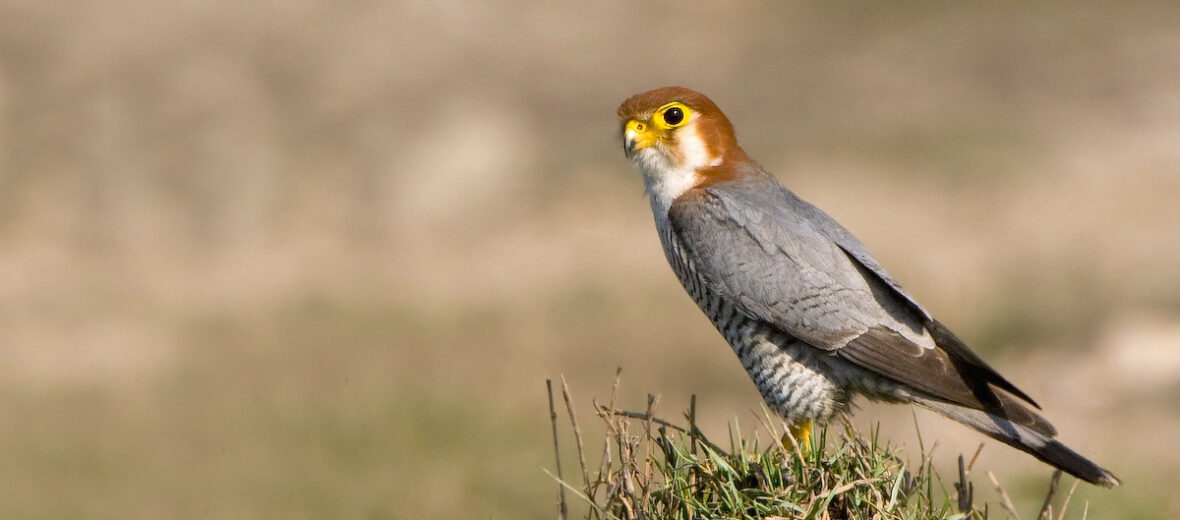
The red-necked falcon hails from Bangladesh, India, Nepal, and Pakistan. There are 2 disjunct populations, 1 in India and the other 1 in Africa. They prefer savannah, semi-desert, and other dry, open countrysides with light tree coverage, and riverine forests. Due to habitat loss at the hands of residential and commercial developments; hunting; trapping; and pollution, these birds of prey are listed as Near Threatened by the IUCN. Their populations are also decreasing.
First the Stats…
Scientific name: Falco chicquera
Weight: Up to 11 ounces
Length: Up to 14 inches
Wingspan: Up to 33 inches
Lifespan: Up to 10+ years
Now on to the Facts!
1.) As mentioned, there are 2 known subspecies: Falco chicquera chicquera – in India, and Falco chicquera ruficollis – in Africa. The African subspecies is often considered a full species.
2.) These birds are crepuscular (active at dawn and dusk).
3.) They prey on bats, small birds, and squirrels.
4.) The red-necked falcon hunts in pairs. 1 individual will fly low and flush out small birds or bats, then the other will fly higher and seize the fleeing prey on the wing (in mid flight).
5.) Their vocal communication consists of a shrill “ki-ki-ki-ki.”
But wait, there’s more on the red-necked falcon!
6.) Red-necked falcons prefer to drink standing water, rather than obtaining their moisture from the prey they eat.
7.) During the breeding season, they engage in courtship feeding where, in a turn of events, the female will feed the male.
Did you know…?
They can fly at speeds of up to 50+ mph.
8.) Nests are often reused from other species of birds, like the African fish eagle.
9.) Females lay up to 4 eggs that hatch in up to 34 days.
10.) Chicks fledge in up to 48 days in India, and up to 37 days in Africa.
Now a Short Red-Necked Falcon Video!
Be sure to share & comment below! Also, check out the Critter Science YouTube channel. Videos added regularly!
Want to suggest a critter for me to write about? Let me know here.
Some source material acquired from: Wikipedia & IUCN
Photo credit: Cks3976



